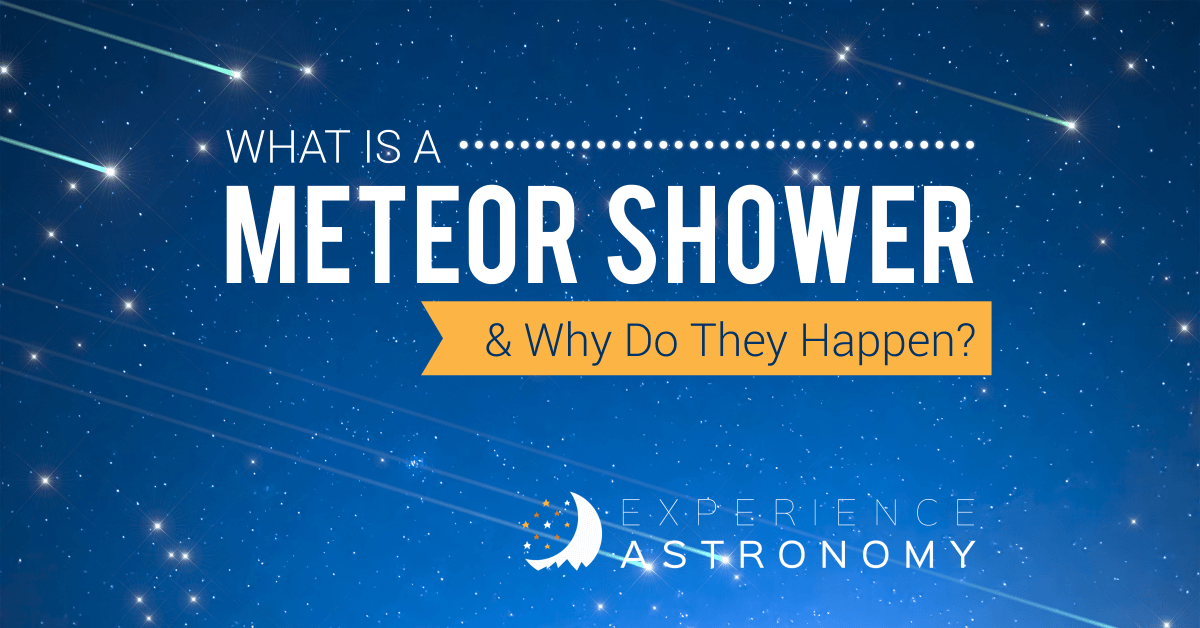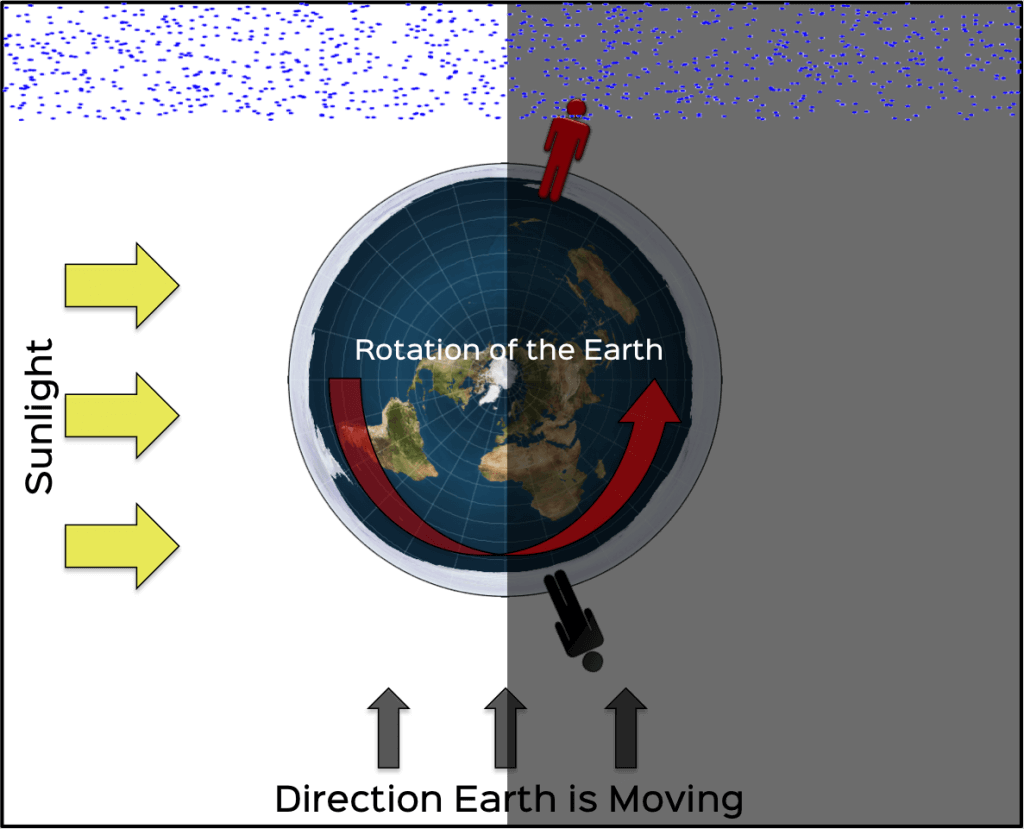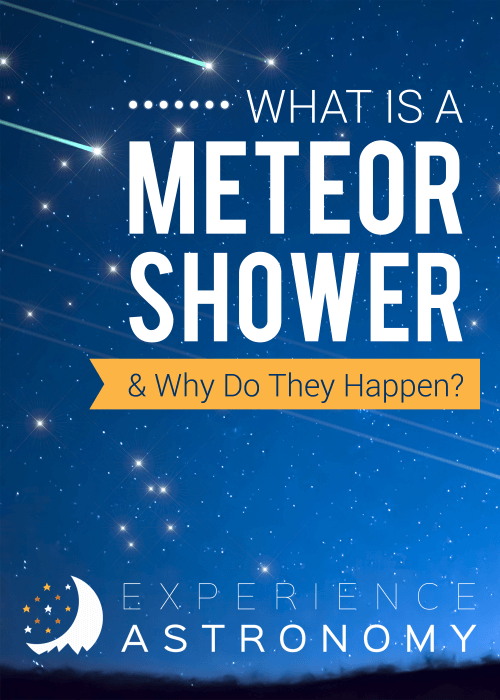A meteor is sometimes called a shooting star or falling star, but a meteor is not a star at all.

Meteoroid vs. Meteor vs. Meteorite
Space is full of things called meteoroids. These are small bits of rocky or metallic space junk. Most are pebble-sized.
When one of these meteoroids gets too close to the Earth’s atmosphere, it will collide with the air particles and burn up quickly. This creates a streak of glowing materials as the space junk incinerates. This is called a meteor. The root word meteor comes from a Greek word that means “high in the air.”
Occasionally, a meteor is large enough that not all of it burns up in the atmosphere and a chunk of debris will actually make contact with the land or water. This is called a meteorite. (Some can be quite large.)
What is a Meteor Shower?
As the Earth moves around the sun, it occasionally flies through a large stream of meteoroids. This means the meteors are generally more frequent and radiate from a specific place in the sky.
Let me use an analogy. Last May, I took my family up to Mackinac Island. On the mainland at that time of year, the coast is infested with a little mosquito-like bugs called midges. They are harmless little critters, but it is common to see whole clouds of these bugs in the sky. As we drove, our windshield was heavily splattered with streaks of midge guts (which is not fun to clean off later). Think of a meteor shower like the Earth flying through a cloud of bugs and the streaks in the sky are like streaks of bug guts on Earth’s windshield.
Why Do We Have Meteor Showers?
Meteor showers are most often caused by the debris fields left by comets. As comets fly closer to the sun and the ice on them vaporizes, meteoroids are also shed from the comet. Meteor showers happen as Earth flies through this debris field.
Why is Early Morning the Best Time to See a Meteor Shower?
This diagram will probably help to explain why morning is best…

The Black Man just saw the sunset, and the Red Man is about to see the sunrise. The Red Man also is standing on the side of the Earth facing the direction the Earth is moving as it revolves around the sun—at around 67,000 miles an hour.
The Red Man is in the “front seat” of the Earth, watching the debris hitting the “windshield” of the Earth. While the Black Man can see some of the meteors gliding by him, the Red Man has the best view.
List of Best Meteor Showers
Quadrantids – Dec 28 – Jan 12 (Jan 3)
Geminids – Dec 4 – Dec 17 (Dec 14)
Perseids – Jul 17 – Aug 24 (Aug 13)
Eta Aquariids – Apr 19 – May 28 (May 6)
Arietids – May 22 – Jul 2 (Jun 7)
March Lyncids – Jan 25 – May 15 (Mar 7)
Orionids – Oct 2 – Nov 7 (Oct 21)
Lyrids – Apr 16 – Apr 25 (Apr 22)
Leonids – Nov 6 – Nov 30 (Nov 17)
Daytime Beta Taurids – Jun 5 – Jul 17 (Jun 28)
Beta Cassiopeids – Jul 3 – Aug 19 (Jul 29)
Ursids – Dec 17 – Dec 26 (Dec 22)

Your Kids Can Learn Astronomy!
If your child loves learning about meteors and meteor showers, they will love Experience Astronomy.
We cover so much in these full-school-year online courses. Students learn about…
- How to identify major constellations
- Ways astronomy connects to fascinating stories in history, literature, folklore, archaeology, and the Bible
- The amazing world of interstellar space—stars, galaxies, black holes, and exoplanets
- How ancient people used astronomy to tell time, create calendars, and navigate the globe
Best yet: I do all the teaching for you through fun, engaging online videos and hands-on activities.

